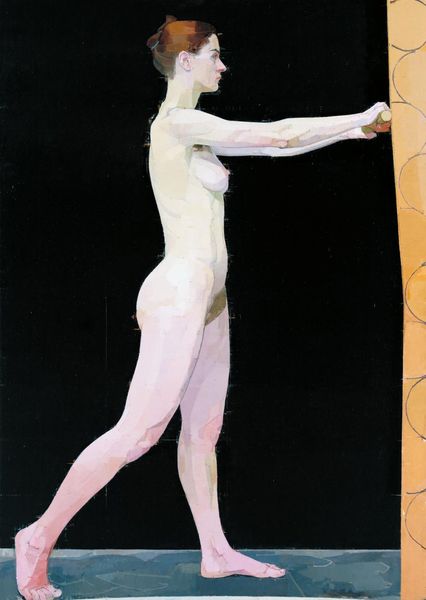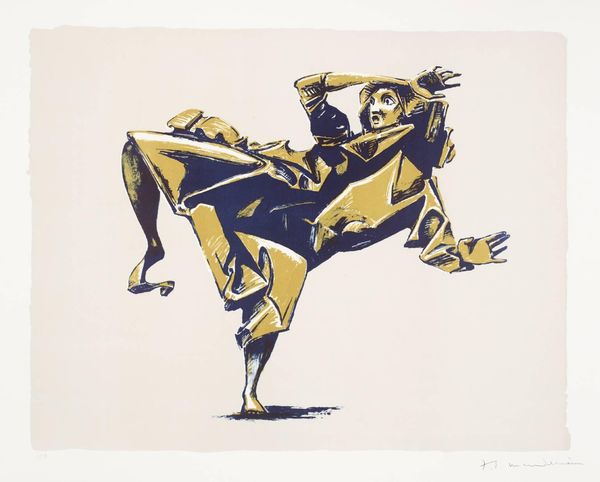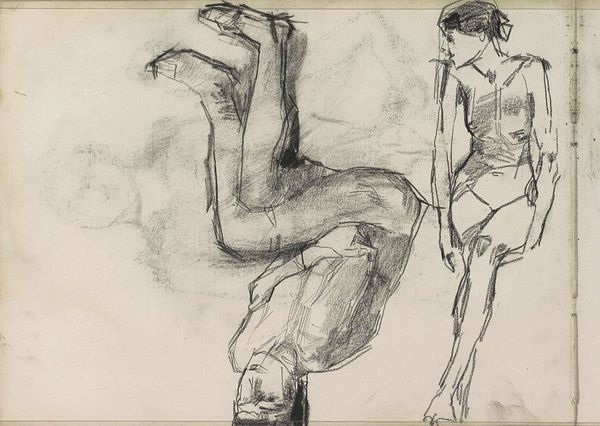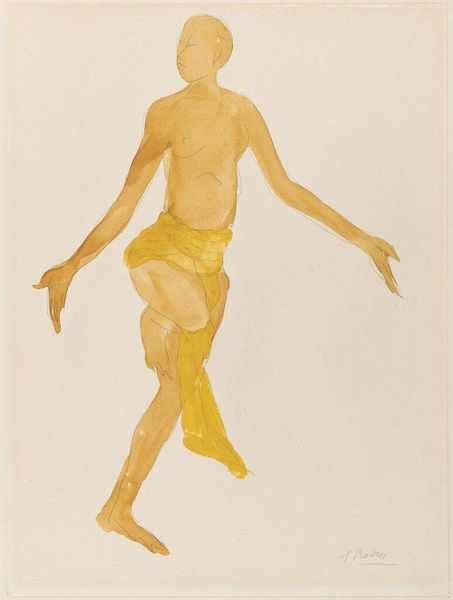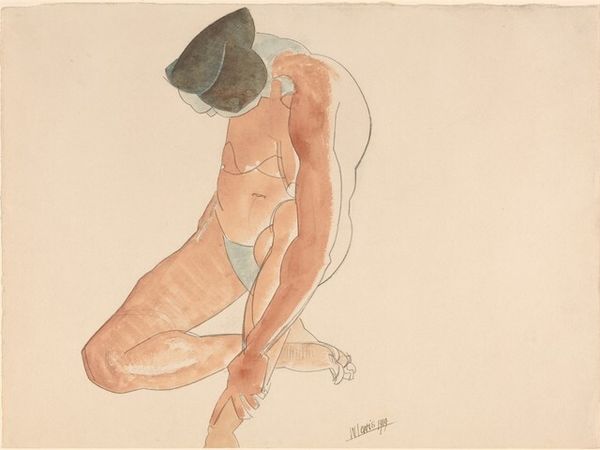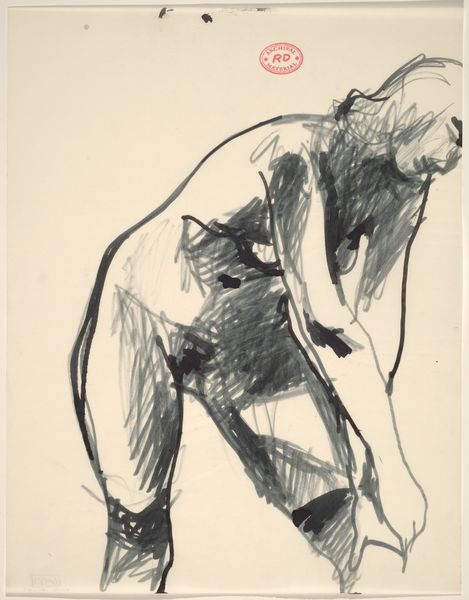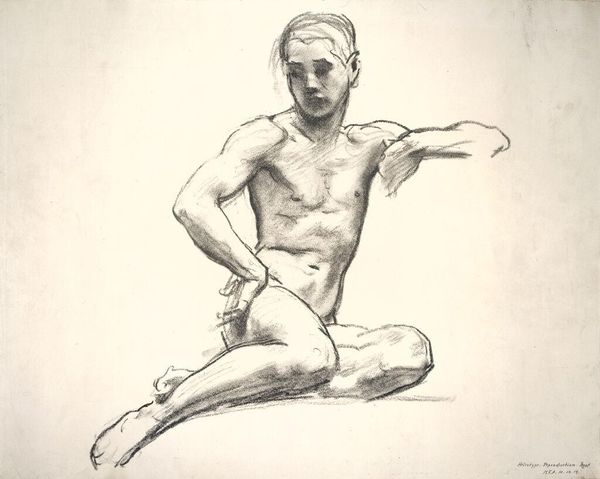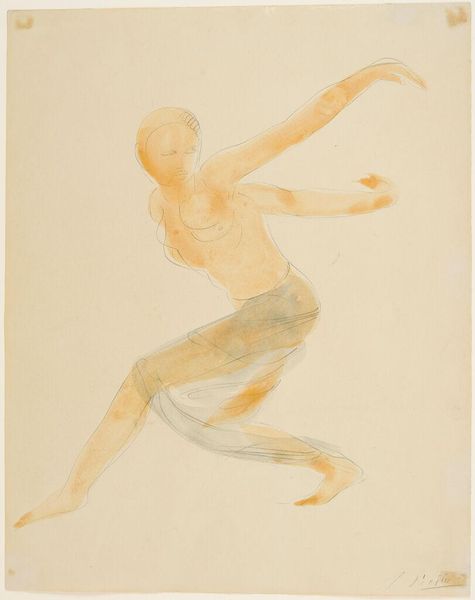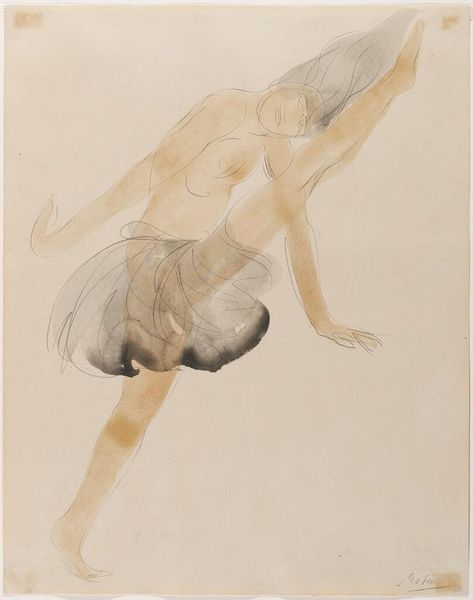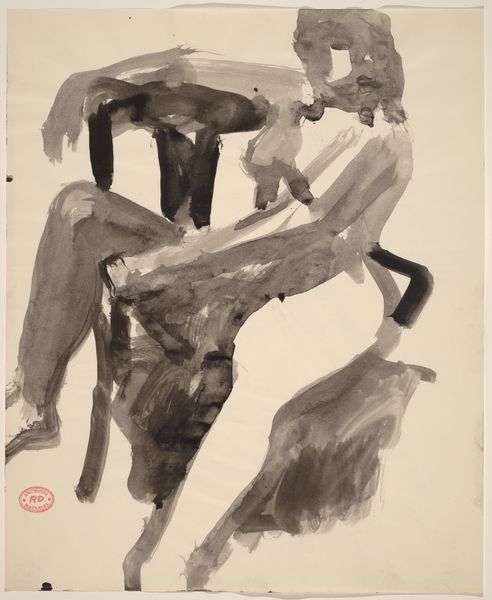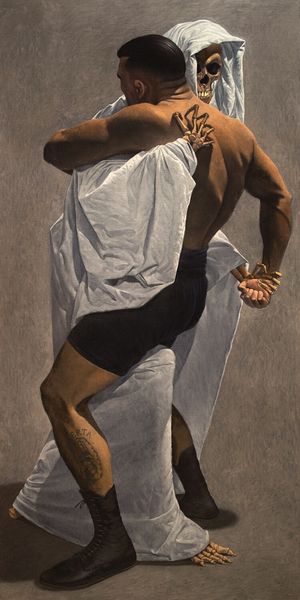
Dimensions: 34 x 24 cm
Copyright: Benny Andrews,Fair Use
Curator: Standing before us is Benny Andrews' "Dragger (Study for Trash)," created in 1971 using acrylic paint and charcoal. Andrews, known for his contributions to the Black Arts Movement, offers us a glimpse into his evolving figuration here. Editor: My first reaction? It's visceral. The energy practically leaps off the canvas! The pose is so strained, and there's something intensely vulnerable in the exposure. What strikes me most is the odd beauty amidst the implied struggle; that striped, paint-streaked bottom is kind of brilliant. Curator: That awkwardness you're sensing feels intrinsic to Andrews' style. His figures often exist within this tension. He challenges idealized representations of the human form by accentuating imperfections, and that shadow seems to embody some form of inner conflict or antagonist. We know Andrews engaged deeply with questions of labor and representation in art. Editor: I can almost hear the weariness. And that title, "Study for Trash," is incredibly loaded. Is it about disposability, about devalued people or professions? Or the garbage men of the world? About dragging stuff. Trash as an indictment? Is it art or life that the figure is trying to overcome, since it could easily be both for Andrews. Curator: Absolutely. Consider the period. This was a time of social and political upheaval, civil rights struggles, and growing awareness of economic disparities. Andrews wasn't just making aesthetic choices. He was intentionally grappling with urgent questions, inviting the viewer to witness and participate in these social reflections, he was always looking for the right representation. Editor: And there's an enduring relevance to this approach. That's how art should behave, reflecting struggle and revealing raw truth in what could simply be the pose and stance of dragging heavy waste. There’s a quiet fury, the feeling of trying to escape or endure. Curator: This painting reminds me of the responsibility that artists bear – their commitment to not only reflecting the society but to question the norms too. Editor: And for me, it reiterates the quiet fortitude of so many everyday workers and others who may well, like this artwork suggests, are actually beauty.
Comments
No comments
Be the first to comment and join the conversation on the ultimate creative platform.
